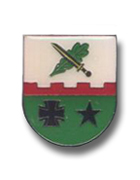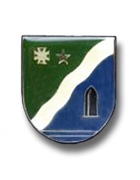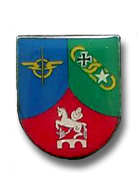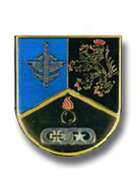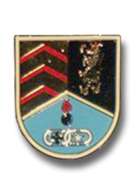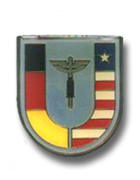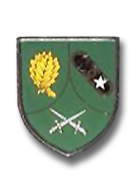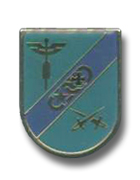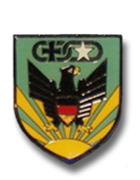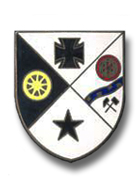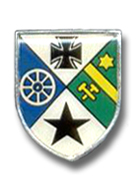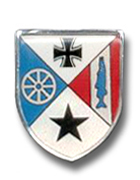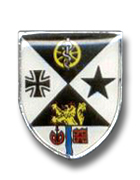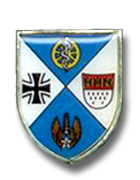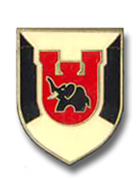| If you do
NOT see the Table of Contents frame to the left of this page, then
Click here to open 'USArmyGermany' frameset |
||||||||||||||||||||||||||||||||||||||||||||||||||||||||||||||||||||||||||||||||
|
Wartime Host Nation Support |
||||||||||||||||||||||||||||||||||||||||||||||||||||||||||||||||||||||||||||||||
|
|
||||||||||||||||||||||||||||||||||||||||||||||||||||||||||||||||||||||||||||||||
|
||||||||||||||||||||||||||||||||||||||||||||||||||||||||||||||||||||||||||||||||
|
|
||||||||||||||||||||||||||||||||||||||||||||||||||||||||||||||||||||||||||||||||
| General Information on the WHNS Program in Europe | ||||||||||||||||||||||||||||||||||||||||||||||||||||||||||||||||||||||||||||||||
| 1982 - 1992 | ||||||||||||||||||||||||||||||||||||||||||||||||||||||||||||||||||||||||||||||||
(Source: Wartime Host Nation Support - Turning Plans into Reality, COL William J. Flanagan and MAJ Thomas Schatte, ALOG, Jan-Feb 1988) |
||||||||||||||||||||||||||||||||||||||||||||||||||||||||||||||||||||||||||||||||
|
Wartime Host Nation Support -- Turning Plans Into Reality
by Colonel William J. Flanagan and Major Thomas Schatte Wartime host nation support (WHNS) provided by the German Army for designated U.S. requirements has a far-reaching impact on logistics support for U.S. Army, Europe (USAREUR). Although not fully fielded, the 2d Support Command (SUPCOM) (Corps), VII Corps, is at the forefront in implementing WHNS, which is crucial to USAREUR's warfighting capability. Logisticians, particularly those who plan and execute logistics support for forward-deployed units and Capstone organizations designated for USAREUR, must fully understand the concept to ensure that the advantages and limitations of WHNS are properly addressed. This new support concept is based on the April 1982 WHNS agreement committing the United States to reinforce its forward-stationed forces with six additional divisions and associated flying squadrons within 10 days. At the same time the Federal Republic of Germany (FRG) agreed to provide support from both civilian and military sources. The military WHNS force consists of approximately 83,000 German reservists, of which 50,000 are dedicated to the support of USAREUR. For command and control purposes, these combat support and combat service support units earmarked for the U.S. Army are placed under brigade-level support commands -- in German, Unterstuetzungskommando, or UKdo. There are six UKdo's that support major U.S. Army commands (shown below). Of the six, four (Ukdo 3, 5, 8 and 9) have been activated, while a fifth, UKdo 4, is scheduled for activation in late 1987. The sixth UKdo, UKdo 7 -- an "equipment-holding" unit -- will be represented by a peacetime planning cell with the German Territorial Northern Command; UKdo 7 will support the 310th Theater Army Area Command (TAACOM) in wartime. |
||||||||||||||||||||||||||||||||||||||||||||||||||||||||||||||||||||||||||||||||
|
||||||||||||||||||||||||||||||||||||||||||||||||||||||||||||||||||||||||||||||||
(Source: Bundesarchiv.de - German national archives web site) |
||||||||||||||||||||||||||||||||||||||||||||||||||||||||||||||||||||||||||||||||
|
||||||||||||||||||||||||||||||||||||||||||||||||||||||||||||||||||||||||||||||||
(1) WBK . . . Wehrbereichskommando (Military District Command) TKdo . . . Territorialkommando (Territorial Command) |
||||||||||||||||||||||||||||||||||||||||||||||||||||||||||||||||||||||||||||||||
|
|
||||||||||||||||||||||||||||||||||||||||||||||||||||||||||||||||||||||||||||||||
| Unterstützungskommando 3 | ||||||||||||||||||||||||||||||||||||||||||||||||||||||||||||||||||||||||||||||||
|
|
||||||||||||||||||||||||||||||||||||||||||||||||||||||||||||||||||||||||||||||||
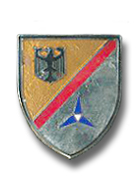 UKdo 3 Crest UKdo 3 Crest |
||||||||||||||||||||||||||||||||||||||||||||||||||||||||||||||||||||||||||||||||
|
|
||||||||||||||||||||||||||||||||||||||||||||||||||||||||||||||||||||||||||||||||
| Unterstützungskommando 4 | ||||||||||||||||||||||||||||||||||||||||||||||||||||||||||||||||||||||||||||||||
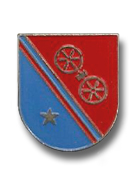 UKdo 4 Crest UKdo 4 Crest |
||||||||||||||||||||||||||||||||||||||||||||||||||||||||||||||||||||||||||||||||
(Source: Unit list provided by Rick Anders, Germany) |
||||||||||||||||||||||||||||||||||||||||||||||||||||||||||||||||||||||||||||||||
| UKDO 4 SUBORDINATE UNITS - 1980s | ||||||||||||||||||||||||||||||||||||||||||||||||||||||||||||||||||||||||||||||||
|
||||||||||||||||||||||||||||||||||||||||||||||||||||||||||||||||||||||||||||||||
| Unterstützungskommando 5 | ||||||||||||||||||||||||||||||||||||||||||||||||||||||||||||||||||||||||||||||||
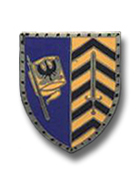 UKdo 5 Crest UKdo 5 Crest |
||||||||||||||||||||||||||||||||||||||||||||||||||||||||||||||||||||||||||||||||
(Source: Wartime Host Nation Support - Turning Plans into Reality, COL William J. Flanagan and MAJ Thomas Schatte, ALOG, Jan-Feb 1988) |
||||||||||||||||||||||||||||||||||||||||||||||||||||||||||||||||||||||||||||||||
|
||||||||||||||||||||||||||||||||||||||||||||||||||||||||||||||||||||||||||||||||
The normal complexity of these tasks is redoubled because UKdo 5, a German unit, is intended to support only U.S. soldiers. A review of this process as it applies to UKdo 5 and the 2d SUPCOM provides a good understanding of the WRNS process and the lessons applicable to logisticians. Activating The German Army has divided the WHNS unit activation process into two parts partial and full activation. For the German Army, a date assigned to either stage indicates the start of the process, not its completion. Thus a full activation date of October 1988 means the series of tasks that constitute full activation starts on that date. Partial activation includes the process of publishing unit orders and identifying specific reservists to man a given unit. A small cadre of from three to five active-duty personnel in addition to civilian staff members are also assigned. The vehicles and other equipment to be mobilized from the civilian sector, known as "materiel mobilization augmentation," are also identified by serial number and owner, and mobilization orders are prepared. Finally, alert and mobilization plans are developed. Once full activation starts, operational planning begins, and both active-duty and reserve personnel can be trained in their new unit's mission. Unit equipment other than materiel mobilization augmentation items is procured and stored in the mobilization support site, or armory. Several UKdo 5 units have started the full activation stage. To date, the headquarters and supply companies, the two Lance escort batteries, the field replacement battalion, the transportation regimental headquarters company, and one transportation battalion have started full activation. Two more units began full activation beginning in October 1987, and the remainder are scheduled in the 1988-1992 timeframe. Stationing The new units require facilities to store the equipment and to serve as mobilization sites. Initially, an attempt was made to station as many units as possible in existing facilities, but space was quickly exhausted. Most of the units require new construction, much of which is still underway. Completion of this infrastructure for UKdo units is projected into 1991. In but one of many examples of the lower-level cooperation needed to ensure the success of the WHNS program, UKdo 5 and 2d SUPCOM conducted a trafficability test of an armory complex designed to accommodate the M911 heavy equipment transporter (HET). The test revealed that the planned layout would not accommodate the HET's wide turning radius, and revisions to the layout plans were made before the complex was constructed. This type of interaction is required to reduce construction problems. Equipping WHNS unit equipment falls into one of four categories as indicated by numerical codes on unit tables of organization and equipment (TOE's). Equipment that is German-sourced and -funded includes military-unique equipment, such as rifles, pistols, protective masks, and protective clothing. Major items of U.S.-manufactured equipment are the camouflage nets and support systems, the HET's with trailers, and the forklifts used in transportation and ammunition-handling units. A third category of equipment includes the trucks, cars, motorcycles, and other items that belong to civilian firms in peacetime and will be requisitioned for military use in wartime. The vehicles are identified by serial number and owner. Requisition documents are prepared for wartime contingencies, and mobilization exercises are periodically conducted in which the vehicles are called in and inspected for serviceability. Finally, there are items of standard German Army equipment that, by virtue of the cost-sharing agreement, are paid for by the United States. These include more than 380 line items, encompassing a wide range of items, including military conversion kits for civilian vehicles, light anti-tank weapons, and fire extinguishers. Of the U.S.-sourced and -financed equipment, only the camouflage nets and support systems have been procured. The 6,000-pound, rough-terrain forklifts are scheduled for acquisition in 1988 and 1989, while the HET's will not be available until 1989 at the earliest. To ensure this process remains on track, the funding for both items must be given high priority. Training |
||||||||||||||||||||||||||||||||||||||||||||||||||||||||||||||||||||||||||||||||
| UKDO 5 SUBORDINATE UNITS - 1980s | ||||||||||||||||||||||||||||||||||||||||||||||||||||||||||||||||||||||||||||||||
|
||||||||||||||||||||||||||||||||||||||||||||||||||||||||||||||||||||||||||||||||
(1) TransBtl 453 (453rd Transportation Battalion) is probably one of the subordinate battalions of TrspRgt 45 (45th Transportation Regiment) on the org chart. |
||||||||||||||||||||||||||||||||||||||||||||||||||||||||||||||||||||||||||||||||
(Source: JOBBER, April 13, 1987) |
||||||||||||||||||||||||||||||||||||||||||||||||||||||||||||||||||||||||||||||||
SUPCOM, UKdo 5 working on better relations by Bob Beckstead The recent WINTEX/CIMEX field training exercise may be history in the books, but for the soldiers of the 2nd Support Command (Corps), it represented the beginning of a new working relationship with their German counterparts. Although 2nd SUPCOM had been dealing with the German Army unit, Unterstuetzungs-Kommando (UKdo) 5 for over a year, it was the first time the two units had actively worked side-by-side, according to Maj. Thomas Schatte, 2nd SUPCOM's Civil Affairs officer. "It was a valuable experience for them (the soldiers of UKdo 5)," Schatte said, adding that the Americans also benefited from their first face-to-face working relationship with the unit. In previous exercises, such as Crested Eagle and REFORGER, UKdo 5 had been involved merely as spectators. But during WINTEX/CIMEX, they were a part of the action. "About 30 (UKdo 5) personnel were involved, working in the player cell," said Schatte. "They received orders from 2nd SUPCOM, went through the staff procedures, and conducted nightly briefings for the 2nd SUPCOM staff in English. "It was the first time they physically worked with the Americans, and that was a very beneficial aspect of the exercise," Schatte continued. UKdo 5 is a German Army support command which is aligned with the 2nd SUPCOM under the provisions of the April 1982 Wartime Host Nation Support Agreement. It is one of six support commands, which are chiefly composed of combat support and combat service support units. Under the bilateral agreement, the Germans provide certain types of military units to support the U.S. forces during wartime. The United States reciprocates by providing reinforcing divisions. The UKdo subordinate units are not active Army, but are reserve units which are mobilized once every two to three years for training, according to Schatte. The 50-man headquarters and "a couple of reserve units" are the only UKdo 5 units that have thus far been activated, Schatte said. In wartime, however, the number of UKdo 5 personnel would climb to nearly 12,000 soldiers. Of these, over 8,000 support 2nd SUPCOM directly. They are broken down into five major units, including a transportation regiment, ammunition regiment, petroleum supply battalion, maintenance battalion, and a casualty evacuation battalion. UKdo headquarters, which was formally activated in December 1985, is located in Ludwigsburg. Since its activation, soldiers from Headquarters, 2nd SUPCOM have been working to build a closer relationship with their German counterparts. "The activities have been more professional than social," said Schatte. Besides acting as official observers during Crested Eagle and REFORGER, a translator from UKdo 5 was also attached to 2nd SUPCOM for two weeks in March 1986 to brush up on military terminology. In May 1986, 2nd SUPCOM provided an honor platoon for UKdo's official activation ceremony. The Day of Camaraderie in July 1986 was another chance for the American and German soldiers to get together, an event that will be repeated during this year's Day of Camaderie celebration. And last Thursday, about 15 UKdo 5 enlisted soldiers underwent weapons qualification with 2nd SUPCOM's Special Troops Battalion. Because of these partnership-type activities, Schatte said that 2nd SUPCOM had, in January, applied for the exchange of partnership scrolls between the two units. Approval of the request would cement an official Project Partnership relationship between 2nd SUPCOM and UKdo 5. It hasn't all been a bunch of get-togethers though. There have also been paperwork projects between the two, which are just beginning to take form. "We've been working on developing a joint SOP (standard operating procedure) for working together," Schatte said. "It's an on-going process. We still need to refine the principles of cooperation. "We do have war plans," he continued, "but we need to refine those. You never stop working on them, because it (the planning) is never done." The ultimate key to success, Schatte said, is when the two units are able to apply these paperwork principles to an actual side-by-side working relationship. But before that can happen, more work must be done. Schatte admitted that the program is "still trying to get off the ground. It will take two to four years to complete," he said. The building-up process involves identifying personnel for assignment to the UKdo units, building an infra-structure (kasernes and facilities), requisitioning and receiving equipment, and training the personnel. Throughout this build-up process, contact between 2nd SUPCOM and UKdo 5 will be a major factor in the program's success. The two units currently keep in touch with each other "about every other day," Schatte said, in the form of phone conversations, meetings, training exercises and get-togethers. Working together, the two units will continue their planning so that, if necessary, they will be able to perform their assigned missions together in the event of war. |
||||||||||||||||||||||||||||||||||||||||||||||||||||||||||||||||||||||||||||||||
(Source: The Aschaffenburg Forum, June 28, 1989) |
||||||||||||||||||||||||||||||||||||||||||||||||||||||||||||||||||||||||||||||||
German soldiers escort Lance battalion by Karen and Rob Ault The woods are quiet as the German soldiers move slowly through the forest, looking for anything out of the ordinary - anything that could ruin their mission of guarding a U.S. Army Lance missile firing platoon. Finding nothing, they begin to deploy around the firing point and secure it for the American missile crew. But this wasn't wartime. This was a recent training exercise conducted by the 3rd Battalion, 12th Field Artillery, and their German Lance Escort Battery 4502. The units spent two days training together, learning new tactics and how to work with each other. |
||||||||||||||||||||||||||||||||||||||||||||||||||||||||||||||||||||||||||||||||
|
||||||||||||||||||||||||||||||||||||||||||||||||||||||||||||||||||||||||||||||||
The German unit acted as a security escort, sweeping the area around the Lance unit. The unit gave warnings of aggressors and responded accordingly during a mock battle, said launch platoon leader 1st Lt. Richard Majancsik from Battery B, 3rd Bn, 12th FA. With the Germans providing security, lance crew members can concentrate on their technical task. "It is going to make our job easier," Majanesik said. Although there were language difficulties, both sides agreed they had worked well together and learned a great deal. They used a lot of sign language, and with the pieces soldiers knew of each other's language, they were able to understand each other, said Sgt. David Arellano from Battery A. During the three-day exercise, the units tested new tactics prescribed by a four-year USAREUR study on Lance survivability. The study assessed all types of threats to lance units - including air, ground, motorized, reconnaissance and electronic. Based on the way an enemy would find and attack a Lance unit, the study derived new tactics to increase survival including the use of security units, Morrison said. "Some are very different than ways we have used traditionally to defend ourselves," he said. The exercise will be the basis for the German Artillery School's doctrine on security units, although there may be some variation between battalions, Morrison said. The exercise is a good exchange of ideas and techniques, according to Oberst Leutnant Ulrich Dinkelaker. The German lieutenant colonel is from the German Field Artillery School. Every soldier has the opportunity to contribute to the doctrine. Soldiers see it from the foxhole level and can give suggestions on tactics, Dinkelaker said. This gives purpose to the training. "If it's not meaningful, interest flags," Morrison said, referring to both the American soldiers and the German reservists. German males are compelled by law to serve in the reserves after their required 15 months active-duty service. These soldiers, some with long hair or beards, leave their jobs in the civilian sector, taking vacation time, to train 12 days every two years. They serve in the reserves for six years then are listed in the inactive reserve, said Hauptman Friedhelm Duesterwald, company commander of HHC UKDO 5. |
||||||||||||||||||||||||||||||||||||||||||||||||||||||||||||||||||||||||||||||||
| Unterstützungskommando 7 | ||||||||||||||||||||||||||||||||||||||||||||||||||||||||||||||||||||||||||||||||
(Source:
Nachschubbataillon 133 web site) |
||||||||||||||||||||||||||||||||||||||||||||||||||||||||||||||||||||||||||||||||
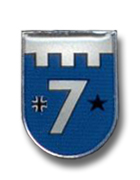 UKdo 7 Crest UKdo 7 Crest |
||||||||||||||||||||||||||||||||||||||||||||||||||||||||||||||||||||||||||||||||
(Source: Rick Anders, Germany, and Nachschubbataillon 133 web site) |
||||||||||||||||||||||||||||||||||||||||||||||||||||||||||||||||||||||||||||||||
ORGANIZATION (1987): |
||||||||||||||||||||||||||||||||||||||||||||||||||||||||||||||||||||||||||||||||
|
||||||||||||||||||||||||||||||||||||||||||||||||||||||||||||||||||||||||||||||||
| UKDO 7 SUBORDINATE UNITS - 1980s | ||||||||||||||||||||||||||||||||||||||||||||||||||||||||||||||||||||||||||||||||
|
||||||||||||||||||||||||||||||||||||||||||||||||||||||||||||||||||||||||||||||||
| Unterstützungskommando 8 | ||||||||||||||||||||||||||||||||||||||||||||||||||||||||||||||||||||||||||||||||
| 1986 - 19.. | ||||||||||||||||||||||||||||||||||||||||||||||||||||||||||||||||||||||||||||||||
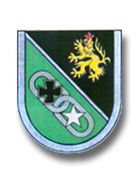 UKdo 8 Emblem UKdo 8 Emblem |
||||||||||||||||||||||||||||||||||||||||||||||||||||||||||||||||||||||||||||||||
(Source: Support Sentinel, Oct 8, 1986) |
||||||||||||||||||||||||||||||||||||||||||||||||||||||||||||||||||||||||||||||||
The German Army's newest contribution to NATO operations, Unterstützungskommando 8 (UKdo 8 or Wartime Host Nation Support Command 8) was activated Oct 1. The ceremony took place at 10:30 a.m. at Niederauerbach Kaserne in Zweibrücken. Units such as this one haven been established under the "Treaty on Host Nation Support During Crisis or War" between the governments of the United States and the Federal Republkic of Germany. U-Kommando 8 is one of several units formed to support the American Army and Air Force during time of war, and the first of two units to be activated in 21st Support Command. Under the terms of the treaty, the Germans will provide combat service units to enable the 21st to better support American reinforcements arriving from CONUS. U-Kommando 8 will primarily support the 60th Ordnance Group and the 29th Area Support Group. The other U-Kommando unit in 21st will activate next year, and it will support the 7th Support Command in Rheinberg. The mission of U-Kommandos is to provide support to each Corps Support Command and Theater Area Area Command. U-Kommando 8 will support 21st with additional security, ammunition, and petroleum, oil, and lubrication (POL) handling units besides providing support to the 5th Signal Command and the 56th Artillery Brigade. During peacetime, the units have a small active staff and are manned by mobilized reserves during war or emergency situations. Even though they are under the German Territorial Southern Command, they respond to support requirements of US Forces. By 1992, six U-Kommandos will be established which, together, with reserve security battalions dedicated to protecting US facilities, will provide more than 90,000 German soldiers to support the US forces during wartime. These units represent an important logistical contribution to the sustainability of US foirces in Germany. |
||||||||||||||||||||||||||||||||||||||||||||||||||||||||||||||||||||||||||||||||
| UKDO 8 SUBORDINATE UNITS - 1980s | ||||||||||||||||||||||||||||||||||||||||||||||||||||||||||||||||||||||||||||||||
|
||||||||||||||||||||||||||||||||||||||||||||||||||||||||||||||||||||||||||||||||
| Unterstützungskommando 9 | ||||||||||||||||||||||||||||||||||||||||||||||||||||||||||||||||||||||||||||||||
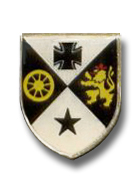 UKdo 9 Crest UKdo 9 Crest |
||||||||||||||||||||||||||||||||||||||||||||||||||||||||||||||||||||||||||||||||
(Source: Rick Anders, Germany, and various others) |
||||||||||||||||||||||||||||||||||||||||||||||||||||||||||||||||||||||||||||||||
ORGANIZATION (1987): |
||||||||||||||||||||||||||||||||||||||||||||||||||||||||||||||||||||||||||||||||
|
||||||||||||||||||||||||||||||||||||||||||||||||||||||||||||||||||||||||||||||||
| UKDO 9 SUBORDINATE UNITS - 1980s | ||||||||||||||||||||||||||||||||||||||||||||||||||||||||||||||||||||||||||||||||
|
||||||||||||||||||||||||||||||||||||||||||||||||||||||||||||||||||||||||||||||||
| Related
Links Nachschubbataillon 133 - nice web site - in German; covers the history of the German Ammunition Battalion 472, part of the WHNS program, and successor outfits. Includes a very nice Unit History in PDF format with many photos. Strategic Studies Project: NATO Burden Sharing - A National War College online report compiled in 1987 that reviews the concept of increased use of Host Nation Support in Europe. (PDF format) |
||||||||||||||||||||||||||||||||||||||||||||||||||||||||||||||||||||||||||||||||
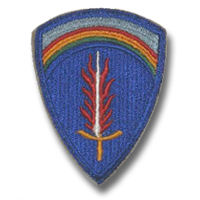
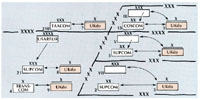
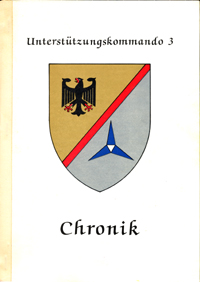
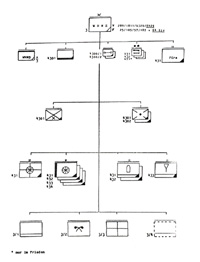
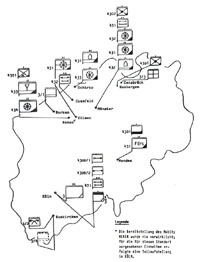
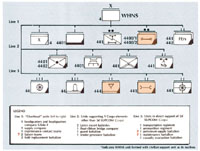
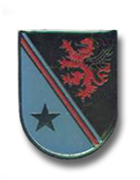

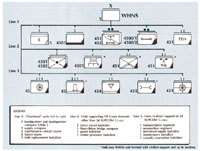
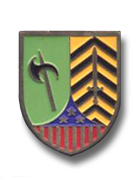
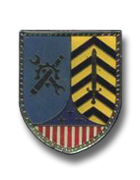
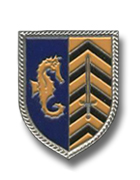
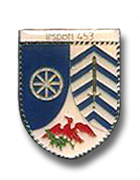
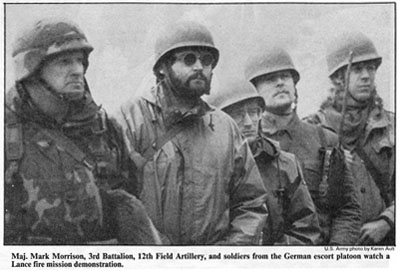
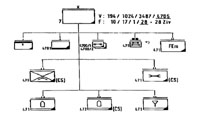

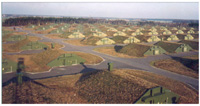 Twisteden Ammo Site
Twisteden Ammo Site 